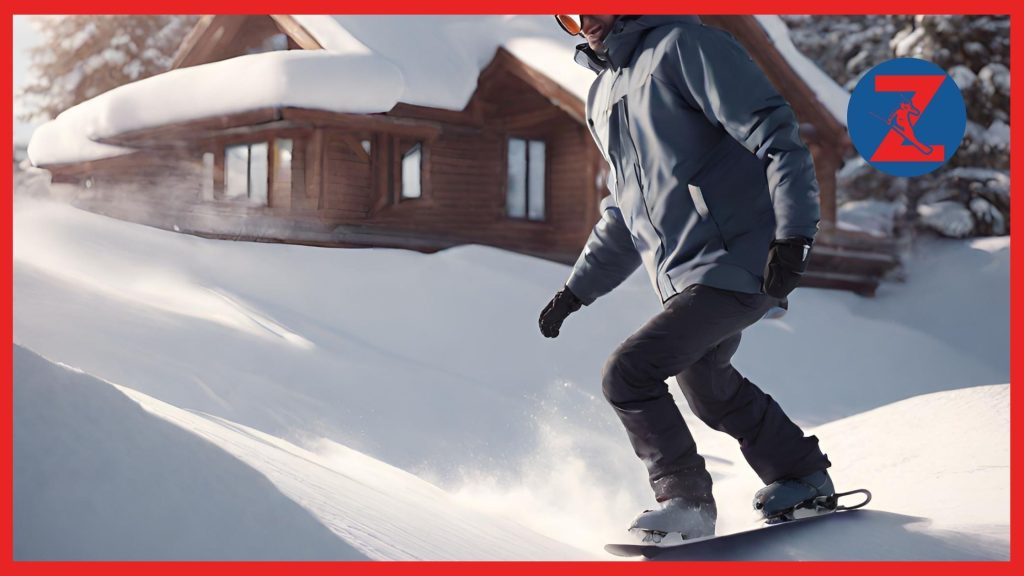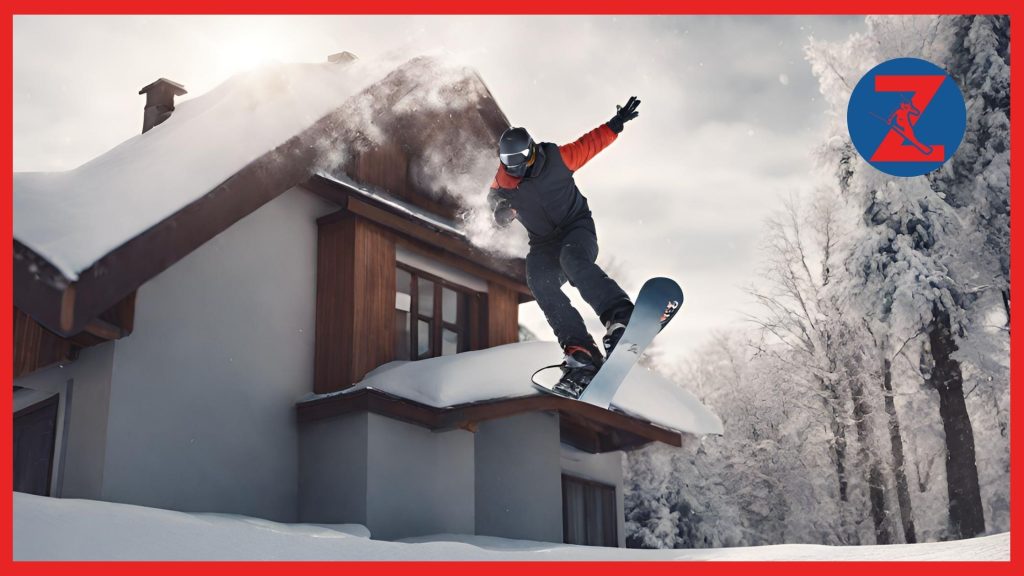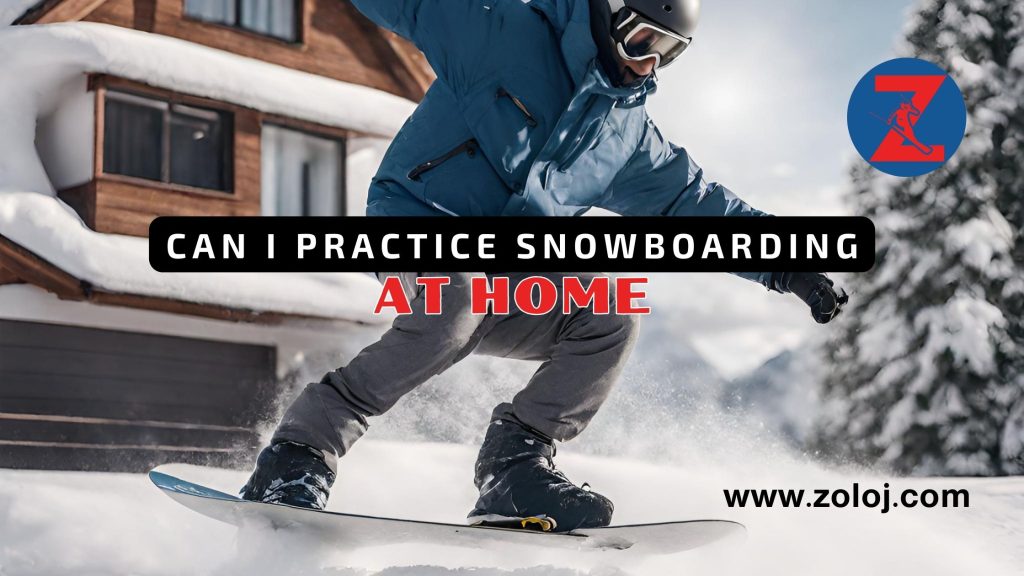Are you itching to hit the slopes but the weather isn’t cooperating? Don’t worry, you can still satisfy your snowboarding cravings right in the comfort of your own home. Whether you’re a seasoned snowboarder looking to stay in shape during the off-season or a beginner eager to improve your skills, practicing snowboarding at home is a viable option.
In this article, we will explore different ways you can engage in at-home snowboard training. We will provide you with tips, exercises, and DIY setups that will help you enhance your snowboarding skills without ever leaving your house.
By incorporating some of these techniques into your routine, you can stay in shape, build strength, and improve your balance, all while having a blast in the process. So, let’s dive in and discover how you can practice snowboarding at home!
Indoor snowboard training: Tips and Tricks

Are you looking to improve your snowboarding skills but don’t have access to a mountain or a snow-covered slope? Don’t worry! With indoor snowboard training, you can enhance your balance, strength, and agility right in the comfort of your own home. Let’s explore some tips and tricks to help you level up your snowboarding game.
Indoor Exercises for Snowboarders
One of the key aspects of snowboarding is having strong legs and core muscles. To build strength and endurance, you can incorporate exercises into your daily routine. Here are a few snowboard exercises you can do indoors:
- Squat Jumps: Start with your feet shoulder-width apart and lower down into a squat position. Explosively jump up, extending your legs and arms. Land softly back into the squat position and repeat for several reps.
- Balance Board Exercises: Invest in a balance board or use a homemade version to replicate the instability of a snowboard. Practice maintaining your balance and stability by standing on the board and engaging your core muscles.
- Jumping Lunges: Begin in a lunge position with one leg forward and the other leg extended back. Jump up, switching the position of your legs midair, and land softly back into a lunge position. Continue alternating legs for a set number of reps.
- Planks: Strengthen your core by holding a plank position for 30 seconds to a minute. Variations such as side planks and forearm planks can target different areas of your core.
DIY Snowboarding Setup at Home
Creating a DIY snowboarding setup at home can be an exciting and cost-effective way to mimic real snowboarding conditions. Here’s what you’ll need:
- A sturdy board or plank: Use a skateboard deck or a sturdy piece of wood that’s wide enough to stand on.
- Carpet or artificial turf: Lay down carpet or artificial turf to mimic the feeling of sliding on snow. This will provide minimal resistance and a smooth surface to ride on.
- An inclined surface: Use a sloping ramp or stack books and boards to create an inclined plane for added challenge and simulation of downhill snowboarding.
- Bindings or straps: Attach bindings or straps to your board or plank to secure your feet and provide a more realistic snowboarding experience.
By combining these elements, you can create a DIY snowboarding setup that closely resembles the sensation of riding on snow. Remember to always prioritize safety and ensure that your setup is stable and secure before practicing your snowboarding skills.
With indoor snowboard training and a DIY setup, you can stay engaged, hone your technique, and build the necessary strength and balance required for successful snowboarding. Take advantage of these tips and tricks to keep progressing as a snowboarder, even when the weather or circumstances keep you indoors.
| Benefits of Indoor Snowboard Training | Tips for Effective Indoor Snowboarding |
|---|---|
| Improved balance and stability Enhanced leg strength and endurance Increased agility and coordination Opportunity for year-round practice Reduced risk of weather-related injuries | Warm up before each session Focus on proper form and technique Gradually increase the intensity of workouts Incorporate rest days for recovery Stay motivated by setting goals and tracking progress |
Home Snowboarding Tricks

Enhance your snowboarding skills from the comfort of your own home with these exciting and challenging tricks. Whether you’re a beginner looking to perfect your basic turns or an experienced rider wanting to add some advanced maneuvers to your repertoire, we’ve got you covered. Follow our step-by-step instructions and expert tips to take your snowboarding to new heights, all without leaving your house.
1. Practice Your Basic Turns
Mastering your turns is essential for any snowboarder, and you can work on this fundamental skill right at home. Set up a small space in your living room or garage and practice your toe-side and heel-side turns. Focus on maintaining your balance and carving clean, smooth arcs. Repetition is key here, so don’t be afraid to spend some time perfecting these turns before moving on to more advanced tricks.
2. Improve Your Balance and Stability
A strong foundation of balance and stability is crucial for any snowboarder. Use a balance board or a wobble board to challenge your core muscles and improve your overall stability. Start by standing on the board with both feet and try to maintain your balance for as long as possible. As your skills progress, incorporate squats and lunges into your balance board routine to mimic the movements you’ll encounter on the slopes.
3. Learn Flatland Tricks
Flatland tricks are a great way to build your confidence and style on the snow. In your home snowboarding practice, experiment with tricks like butters, presses, and nose rolls. These tricks involve shifting your weight and using subtle movements to manipulate your board. Start by practicing on a carpeted area to get a feel for the movements, and then challenge yourself on a slick surface like a laminate floor or a waxed skateboard deck.
4. Master Your Jumps and Spins
Take your snowboarding skills to the next level by practicing jumps and spins at home. Set up a small ramp or use a trampoline (with caution and supervision) to work on your takeoffs and landings. Start with small jumps and gradually increase the height and difficulty as you become more comfortable. Experiment with different grabs and rotations to add style and flair to your jumps, and don’t forget to practice your landing technique to ensure a smooth and controlled touchdown.
| Trick | Description | Difficulty Level |
|---|---|---|
| Ollie | A basic trick where the rider lifts their board off the ground by popping the tail and sucking up their knees. | Beginner |
| Frontside 180 | A jump where the rider rotates their body and board 180 degrees in a clockwise or counterclockwise direction. | Intermediate |
| Backside Boardslide | A rail trick where the rider approaches the rail at an angle and slides along the rail with their board perpendicular to the rail. | Advanced |
Remember, safety should always be a priority when practicing snowboarding tricks at home. Make sure you have enough space and use appropriate padding or mats to minimize the risk of injury. Stay consistent, stay motivated, and soon you’ll be ready to hit the slopes with your improved skills and confidence.
Conclusion
Practicing snowboarding at home can be an incredibly convenient and effective way to improve your skills on the slopes. Whether you’re a beginner looking to develop a solid foundation or an experienced rider aiming to fine-tune your techniques, at-home snowboard training offers numerous benefits.
By following indoor snowboard training tips and engaging in a variety of exercises, you can enhance your balance, strengthen your muscles, and improve your agility, all from the comfort of your own home. From squats and lunges to balance board exercises and core workouts, there are plenty of options to help you stay active and progress as a snowboarder.
Furthermore, by creating a DIY snowboarding setup, you can simulate real snowboarding conditions and practice specific maneuvers. Whether it’s setting up a rail in your backyard or using a balance board to mimic turns, these setups allow you to work on your skills and build muscle memory even without hitting the slopes.
So, what are you waiting for? Start your snowboarding journey at home today and take advantage of the convenience and flexibility it offers. Consistent practice and dedication can lead to remarkable improvements in your snowboarding abilities while ensuring that you continue to enjoy the thrill of the sport.
FAQ
Can I practice snowboarding at home?
Yes, you can practice snowboarding at home! There are various exercises and DIY setups that can help you enhance your snowboarding skills without leaving the comfort of your home.
What are some indoor snowboard training tips and tricks?
Indoor snowboard training is a great way to improve your balance, strength, and agility. You can try exercises like balance board training, squats, lunges, and yoga to work on your snowboarding skills. Additionally, you can create a DIY snowboarding setup at home to simulate real snowboarding conditions.
Are there any specific home snowboarding tricks that I can practice?
Absolutely! There are a variety of home snowboarding tricks that you can practice to enhance your skills. You can start with basic turns and progress towards more advanced maneuvers. By following step-by-step instructions and tips, you can master different snowboarding techniques in the comfort of your own home.






